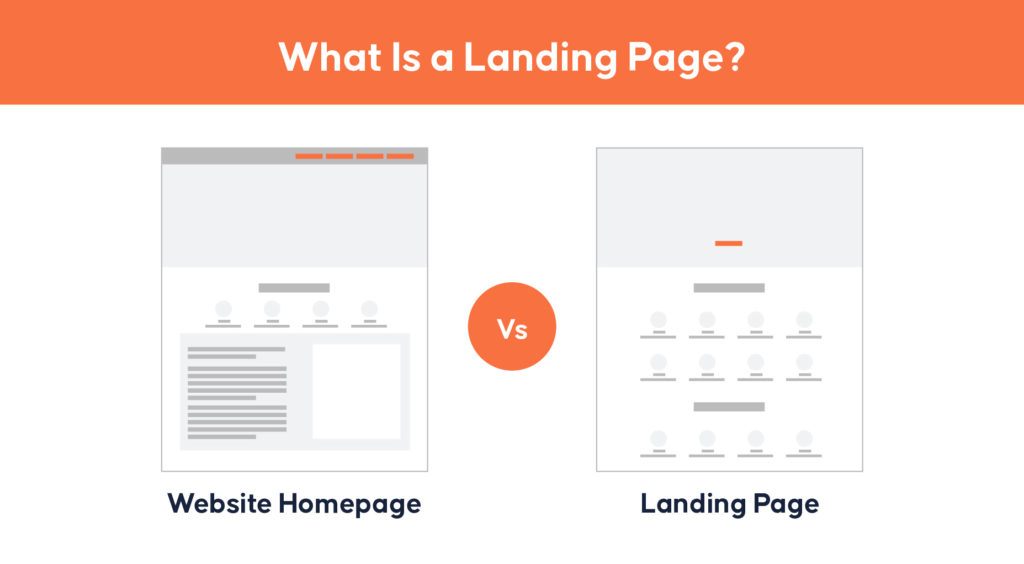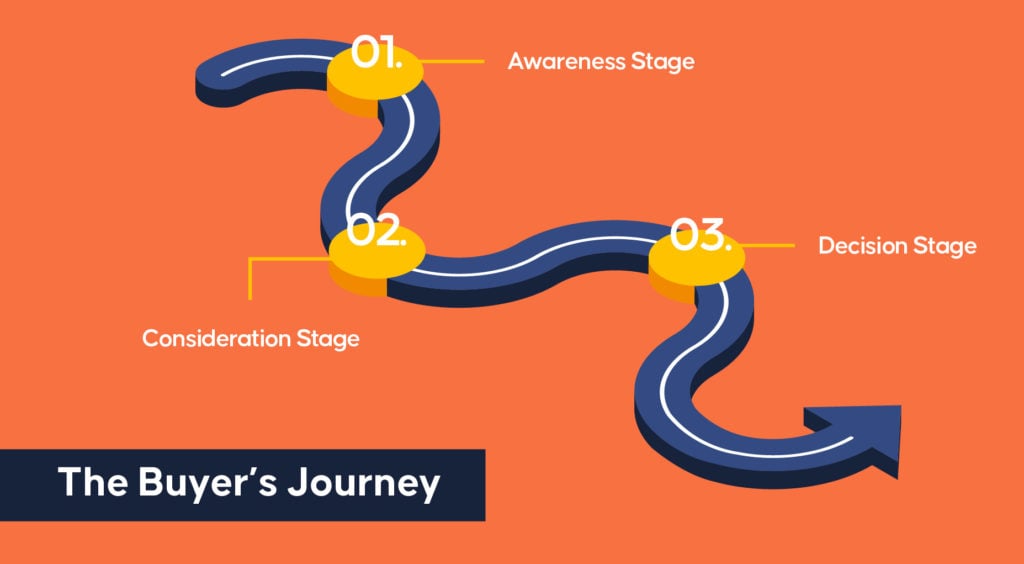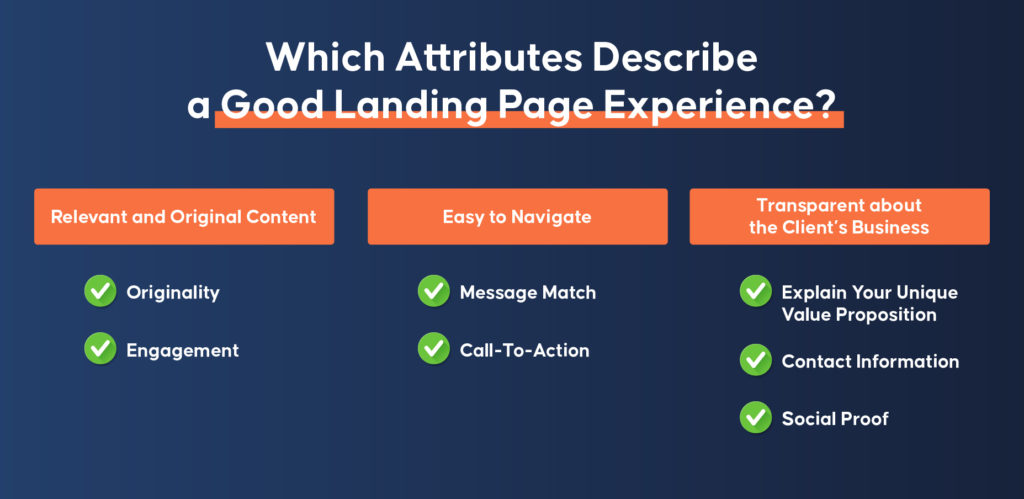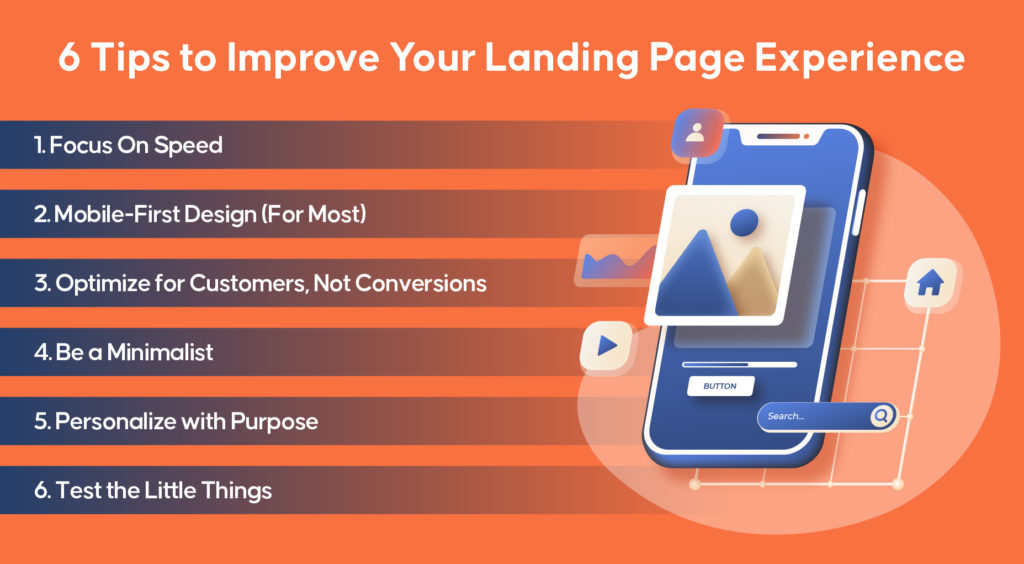Inquivix HQ
1-903, 18 Eonju-ro 146-gil,
Gangnam-gu, Seoul, Korea
06057

What defines a good landing page experience? Is it the design, the content, or the call to action? Or is there something more that needs to be taken into account? In this blog post, we’ll take a look at some of the key attributes that create a good landing page experience. We’ll also explore how you can make sure your landing pages provide an optimal experience for your visitors.
There are many different aspects that go into creating a good landing page experience. Different companies put different emphasis on which elements are the most important for their particular users. However, there are some general characteristics that all good landing pages share. In this article, we will take a look at some of the most important ones. By understanding these key components, you can create a landing page that is more likely to convert leads into customers. So if you’re looking to boost your conversion rate, read on!
What Is a Landing Page?
A landing page is a stand-alone web page that is designed with a single purpose in mind and that is to convert visitors into leads or customers. A well-crafted landing page will feature highly relevant and targeted content, as well as a clear and concise call-to-action (CTA). Landing pages are often accessed through links associated with online ads or email marketing campaigns. As a matter of fact, they are often used to promote special offers or time-sensitive content. When it is done right, landing pages can be highly effective at generating leads and driving conversions. However, if they are poorly designed or not relevant to the ad or email that they are linked to, they can do more harm than good. As such, it is important to carefully consider the design and purpose of your landing page before you create it.
Landing Page vs. Website Homepage
A website’s homepage is typically the first page that visitors will see when they arrive. This page serves as an introduction to the website and its contents. In contrast, a landing page is a specific page that is designed to convert visitors into customers or leads. Landing pages are often used for online marketing campaigns. Hence, they typically include a call to action and a form for visitors to fill out. While a website’s homepage is important for giving visitors an overview of the site, a landing page is essential for driving conversions.

Therefore, when designing a website, it is crucial to consider the purpose of each page. A homepage should be designed to give visitors a general sense of what the site is about, while a landing page should be focused on converting visitors into customers or leads. While both pages are important, they serve different purposes and should be designed accordingly.
What Do You Need Before Creating a Landing Page?
Creating a landing page is a great way to promote your product or service. However, before you get started, there are a few things you’ll need. First, you’ll need to determine your target audience. Then you have to clearly determine your offer. Finally, you’ll need to identify the buyer’s journey from the moment they reach your landing page. Keep in mind that first impressions count, so make sure your landing page is easy on the eyes and conveys the message you want to send. With these three elements in place, you’re ready to create a landing page that will help you achieve your business goals.
The Buyer Persona(s)
Before you can create a landing page, you must first identify your buyer persona(s). A buyer persona is a semi-fictional representation of your ideal customer, based on market research and real data about your existing customers. When you know who you’re creating a landing page for, you can then start to think about what kind of content and offers will appeal to them. Without a clearly defined buyer persona, it’s difficult to create an effective landing page that will convert visitors into leads. So take the time to do your research and define your buyer persona before you start working on your landing page. It will make the process much easier and will help you create a more effective end product.
The Offer
A well-crafted landing page can be a powerful marketing tool, helping to drive conversions and boost sales. But before you can create an effective landing page, you need a strong offer. This could be a discount on your products or services, a free shipping code, or an exclusive opportunity to purchase a new product before it hits the shelves. Whatever the offer is, it needs to be compelling enough to convince visitors to take action. Once you have your offer in place, you can start working on the rest of your landing page.
The Buyer’s Journey
The buyer’s journey is the process buyers go through when they decide to buy a product or service. The buyer’s journey has three stages: awareness, consideration, and decision. Each stage has different objectives, which means that the content you create for each stage should be tailored to fit those objectives.
Meanwhile, someone in the decision stage is ready to buy, so your content should be focused on helping them make the best choice for their needs. In order to create content that is effective at each stage of the buyer’s journey, you need to understand what your buyer needs at each stage. Once you know that, you can create content that resonates with them and helps them move through the stages of the buyer’s journey until they are ready to buy.

Awareness Stage
The first stage of the buyer’s journey is ‘awareness’. At this stage, your potential customer is aware of their problem or need, but they have not yet taken action to find a solution. In order to reach them, your landing page needs to be highly visible and make it clear what you offer. The headline should clearly state what your product or service is, and the copy should address the pain points of your target audience. You also need to include a call-to-action that encourages visitors to take the next step.
Consideration Stage
The second stage of the buyer’s journey is “consideration.” At this stage, your potential customer is actively considering their options and trying to find the best solution for their problem. Your landing page needs to provide more information about your product or service and how it can help solve their problem.
The copy should be based on customer research and answer any questions they may have. Make sure your landing page is optimized for conversion by using the correct colors, fonts, and images. Use social proof, such as customer testimonials, to build trust and credibility. You also need to include a strong call-to-action as they are closer to making a purchase. If you’re running a lead generation campaign, your landing page should include a form where visitors can enter their details in exchange for a valuable offer, such as an ebook or white paper.
Decision Stage
The third stage of the buyer’s journey is “decision.” By this stage, your prospects have done their research and they know what they need. They are going to make a decision on which product or service to buy. Your job is to make sure that they choose yours.
Your landing page should highlight your unique selling points and show your prospects why your product or service is the best solution to their problem. The copy should be short, sweet, and to the point. You need to include a strong call-to-action so the buyer can easily make the purchase.

What Is Landing Page Experience?
Landing page experience is how well a user perceives the overall experience of landing on a page on your website. A good landing page experience will result in a higher conversion rate as it will be easy for the user to find what they are looking for and take the desired action. Creating a good landing page experience involves creating a well-designed page that is relevant to the user’s needs and providing clear and concise information that is easy to understand.
The goal is to make the user’s experience as seamless as possible so that they are more likely to convert into a customer or client. There are many factors that contribute to a good landing page experience, so it is important to consider all of them when designing your pages. By taking the time to create a well-thought-out design, you can ensure that your users have a positive experience on your site and are more likely to convert into paying customers.
Which Attributes Describe a Good Landing Page Experience?
A good landing page experience is designed to meet the specific needs of the user. The page should be easy to navigate and understand, and it should provide all of the information that the user is looking for. A good landing page will also have a strong call to action that encourages the user to take the next step. In addition, the page should be visually appealing and make good use of whitespace to guide the user’s eye to the most important elements. A good landing page experience makes it easy for the user to find what they are looking for and take action.
Relevant and Original Content
A good landing page experience is relevant and original. The content must be well-written and error-free, and it should be tailored to the specific needs of the reader. Most importantly, the content must be relevant to the products or services being offered. A good landing page experience will provide the reader with a positive impression of the company and its products or services. If done correctly, it can result in increased sales and customer loyalty.
Originality
The content should be original and unique to your brand. Generic, fluff content won’t do anything to differentiate you from your competitors. It could even hurt your chances of ranking well in search engines. Landing pages are one of the best places to show off your company’s personality, so make sure the content reflects that.
Engagement
Your content needs to be relevant and original, but also engaging. It should be well-written and free of errors. It should also be interesting enough to keep the reader’s attention. Landing pages are often used to generate leads, so the content needs to be persuasive without being too pushy. If it isn’t, they’ll likely click away before they’ve even had a chance to learn anything about your product or service.
Easy to Navigate
A good landing page experience is easy to navigate. Users should be able to quickly and easily find the information they are looking for without having to click through a lot of links or search through a lot of text. The page should also be designed in a way that is easy to understand and use. The layout should be clear and concise, and the user interface should be intuitive. Finally, the page should load quickly and be responsive to user input. A good landing page experience makes it easy for users to find the information they need and navigate the site without difficulty.
Message Match
Your landing page should have a message that matches the ad campaigns or link that brought the viewer to the page. If someone clicks on an ad for a product that is on sale, they should be taken to a page where they can easily find information about the sale and how to take advantage of it.
Call-To-Action
Your landing page should be structured in a way that makes it easy for visitors to find what they’re looking for, and the call-to-action should be prominently displayed so that visitors know what they need to do next. A well-designed landing page will help to ensure that visitors take the desired action, whether it’s signing up for a newsletter, downloading a white paper, or making a purchase. By contrast, a poorly designed landing page can frustrate visitors and cause them to leave without taking any action.

Transparent about the Client’s Business
A good landing page experience is transparent about the client’s business. The user should feel like they know exactly what the company does and what they can expect from the product or service. The overall design should be professional and modern, with a focus on attracting attention and generating leads. A good landing page experience will also include features that are designed to convert visitors into customers, such as testimonials, customer reviews, and a strong offer. Ultimately, the goal of a good landing page is to turn casual browsers into paying customers.
Explain Your Unique Value Proposition
The page should be clear about what the user can expect to find and should be easy to navigate. The value proposition should be prominently featured and should be expressed in terms that are relevant to the user’s needs. It should be clear to the user why you are the better choice than your competition.
Contact Information
Include the contact details for your business on the landing page so that users can easily get in touch if they have questions or want to learn more. This can be done with a simple form or by providing a phone number and email address.
Social Proof
Social proof can be a valuable element on a landing page as it can help to build trust and credibility. For example, testimonials from happy customers can reassure potential customers that they are making a good choice. Including statistics and data can also help to build trust as it shows that you have nothing to hide.
6 Tips to Improve Your Landing Page Experience
A landing page is a key component of any website. It’s the first page that visitors see when they arrive, and it’s where they go to learn more about your company or product. As such, it’s important to make sure that your landing page is designed for maximum effectiveness. Here are six tips to improve your landing page experience.
1. Focus On Speed
In today’s fast-paced world, speed is essential. Visitors to your landing page are looking for information quickly, and if your page load time is too long, they’re likely to click away in frustration. There are a few things you can do to help ensure your page loads quickly, such as optimizing images and using caching techniques. You should also make sure your server is up-to-date and able to handle a high volume of traffic. By focusing on speed, you can improve your landing page experience and increase the chances of making a sale or converting a lead.
2. Mobile-Friendly Design
Smartphones have had a big impact on the way we browse the web. More and more people are using their mobile devices to access the internet, which means your landing page needs to be designed with a mobile-first approach. This doesn’t mean you should ignore desktop users, but it does mean your page should be designed to work well on smaller screens.
To create a good mobile-first landing page, start by making sure your page loads quickly. Then, focus on creating a clear and easy-to-use layout. Keep your form fields to a minimum, and include large buttons that are easy to tap. And finally, make sure your page is mobile responsive so it looks good on all screen types.
3. Optimize for Customers
The landing page is one of the most important elements of your website. It’s the first thing that potential customers see when they arrive, and it’s your chance to make a good impression. However, too many businesses focus on optimizing their landing pages for conversions rather than customer experience. As a result, they end up with pages that are cluttered and confusing, which can actually discourage sales. Conversions are important, but they should never come at the expense of customers.
4. Be a Minimalist
The average internet user has a very short attention span. This means that if your landing page is cluttered and confusing, you’re likely to lose potential customers. When it comes to landing pages, less is definitely more. Stick to a simple design with clear, concise text and easy-to-use navigation.

5. Personalize with Purpose
Personalization should be done with purpose. In other words, don’t need to add a user’s first name to your page to call it a personalized post. Instead of that, tailor your content and offers to each individual user based on their behavior and preferences. This could mean showing different offers to first-time visitors vs. returning visitors, or displaying more relevant content to website visitors who come from specific referral sources. By personalizing with a purpose, you can improve the effectiveness of your landing pages and have a bigger impact on your business goals.
6. Test the Little Things
It’s often the small details that make the biggest difference. Make sure that your button sizes are easy to click on, that your form fields are easy to fill out, and that your overall layout is easy to navigate. Small tweaks like these can make a big difference in conversion rates.
Follow These Tips to Have a Good Landing Page Experience
Landing pages are an important part of any digital marketing strategy. By understanding what makes a good landing page experience and implementing the right design features, you can create pages that not only convert better but also provide a more positive user experience. If you follow the tips in this article, you should see a significant improvement in your website’s conversion rate. Remember to keep it simple, focus on the user’s needs, and test!
Are you looking for help with your landing page design? Our team of experts at Inquivix can help you create high-converting landing pages that will provide a great user experience. Contact us today to get started!
